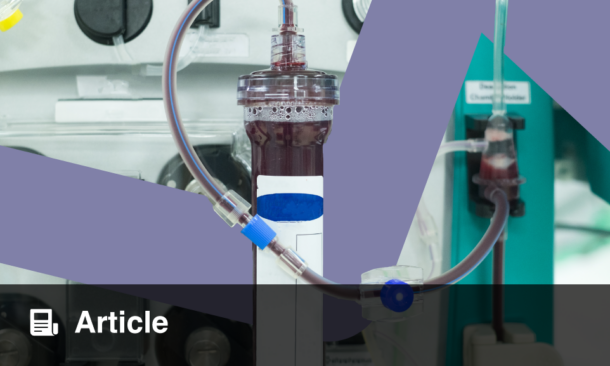Abstract
The use of robotic-assisted laparoscopic techniques has transformed the face of urological surgery in the last decade, with demonstrable benefits over both unassisted laparoscopic and traditional open approaches. For example, robotic-assisted partial nephrectomy is associated with lower morbidity, improved convalescence, reduced postoperative pain, shorter length of hospital stay, and a superior cosmetic result when compared to an open procedure. This review discusses the various perioperative influences on the renal physiology of patients undergoing robotic-assisted urological procedures.
PREOPERATIVE INFLUENCES
Preoperative Fasting
In contrast to long-held beliefs, no demonstrable reduction in circulating volume has been shown following periods of prolonged fasting in patients without cardiorespiratory problems.1 Furthermore, there has been mounting evidence over the last two decades that perioperative fluid restriction during major abdominal surgery improves outcome.2 According to current recommendations from the European Society of Anaesthesiology (ESA),3 patients are encouraged to drink clear fluids until 2 hours before induction of anaesthesia.
Drug Therapy
Alpha-adrenoceptor blocking drugs and phosphodiesterase type-5 inhibitors are commonly used to treat the symptoms of prostatism. They have no direct effect on renal function, but can cause hypotension4 and may indirectly contribute to perioperative renal dysfunction.
PATHOPHYSIOLOGY OF UNDERLYING CONDITIONS
Obstructive Nephropathy
Any obstruction of the urinary tract, e.g. urological malignancy, causes an increase in ureteric and tubular pressure that results in a reduced glomerular filtration rate (GFR). There is a decline in medullary blood flow as a consequence of the increased tubular pressure, which is thought to cause prostaglandin release.5 Prostaglandins reduce intrarenal vascular resistance and increase renal blood flow (RBF). The direct compression caused by the increased tubular pressure gradually increases the renal vascular resistance (RVR) and RBF declines. This is later exacerbated by an intrinsic preglomerular increase in RVR.6
Progressive chronic obstruction may result in tubular atrophy and nephron loss, causing chronic renal insufficiency, which often presents with polyuria due to impaired concentrating ability. Sudden complete obstruction is a potentially reversible cause of acute kidney injury (AKI) if it is recognised and treated early.
Renal Cell Carcinoma
There are common pathological changes in the non-neoplastic kidney in patients with renal cell carcinoma (RCC),7 and this correlates with the higher rate of chronic kidney disease (CKD) in patients with RCC compared with the general population. It is unknown whether these changes are carcinogenic per se, or if CKD increases circulating carcinogens or produces an immunological defect that causes RCC.
Patients with RCC may have paraneoplastic syndromes that can affect renal function. These include hypertension, the cause of which is multifactorial, but often due to hyper-reninaemia; and hypercalcaemia, which may be the result of bony metastases, or due to paraneoplastic parathyroid hormone production, and can result in nephrogenic diabetes insipidus (NDI) as well as cardiac complications including arrhythmias.8
INTRAOPERATIVE INFLUENCES
Partial Nephrectomy
Partial nephrectomy offers superior renal functional outcomes and comparable oncological outcomes when compared with radical nephrectomy9 in the management of localised small renal masses (i.e. <7 cm).10 The swifter convalescence and comparative oncological safety of laparoscopic partial nephrectomy (LPN) have been proven, but it remains a technically challenging operation despite advances in techniques, skill, and instruments and as such has not been widely adopted.11 Robotic-assisted partial nephrectomy (RAPN) has gained rapid popularity because of improved visualisation and relative technical ease. Several studies have suggested a trend towards superiority of RAPN above LPN12 due to the associated lower morbidity, improved convalescence, reduced postoperative pain, shorter reduced length of hospital stay, and a superior cosmetic result.13
Warm ischaemic time during partial nephrectomy impacts negatively on postoperative renal function, and the tumour should be resected within 20 minutes regardless of surgical approach.14 RAPN is associated with more favourable results than LPN in conversion rate to open or radical surgery, operating time, warm ischaemic time, intraoperative blood loss, change of estimated GFR, and length of stay.15,16 Rates of detection of positive surgical margins and postoperative renal dysfunction are comparable16 and long-term renal functional recovery is better following RAPN.
Cystectomy and Urinary Diversion
Traditional diversionary surgery involves the creation of an ileal conduit: an anastomosis is made between the cut ureters and a free section of ileum, which is then brought out to form a urostomy. In the last 30 years, orthotopic neobladder formation has become an increasingly popular approach, in which a spherical ‘bladder’ is fashioned from a free section of bowel (either ileum, colon, or sigmoid) and connected to the ureters and urethra in place of the native bladder.17 Patients have to undergo neobladder training but have comparable or better sexual function than those with ileal conduits.
The intestinal mucosa is more permeable to electrolytes than the urothelium. Urinary potassium, chloride, and hydrogen ions may be exchanged with sodium and bicarbonate ions in the bloodstream, risking a hyperchloraemic, hyperkalaemic metabolic acidosis in association with salt loss.18 Creatinine, urea, and ammonia are also reabsorbed by the intestine. The subsequent additional metabolic and excretory burden means that patients with pre-existing renal and liver dysfunction are precluded from neobladder formation.19 A significant proportion of patients with neobladders develop hydronephrosis and associated decline in renal function, which should be monitored. However, baseline creatinine may increase even in the absence of hydronephrosis, although the significance of this is unclear.20
A recent meta-analysis of robotic-assisted radical cystectomy (RARC) over open radical cystectomy showed it to be a credible alternative with fewer perioperative complications, increased lymph node yields, less estimated blood loss, lower need for transfusions, and shorter length of stay.21 Operative time is often greater in RARC.
Prostatectomy
Robotic-assisted radical prostatectomy (RARP) has surpassed the open technique as the most common extirpative treatment for prostate cancer. There has been extensive regionalisation of RARP, and an associated improvement in global outcomes in high-volume compared to low-volume centres.22
Bleeding or Hypovolaemia
The physiological response to haemorrhage or hypovolaemia involves four principal compensatory mechanisms, which are explained subsequently.
Cardiovascular
Stimulation of baroreceptors in the carotid sinus and aortic arch inhibits the tonic sympathetic activity of the rostral ventrolateral medulla (RVLM) via glossopharyngeal and vagal afferents, producing a reduction in heart rate (HR), myocardial contractility, and vasodilatation. Hypovolaemia-induced reduction in stroke volume is detected as reduced vascular distension by the baroreceptors, whose rate of firing decreases. The subsequent increase in sympathetic outflow from the RVLM increases HR and contractility, and causes venoconstriction of capacitance vessels (increased preload), and arteriolar constriction (increased systemic vascular resistance [SVR]).
Renal
The reduction in renal perfusion pressure (RPP) in hypovolaemia is detected by stretch receptors in the juxtaglomerular apparatus, which causes renin release. Renin has two actions, firstly to stimulate conversion of angiotensinogen to angiotensin, and secondly to stimulate antidiuretic hormone (ADH) secretion.
Following the conversion of angiotensinogen to angiotensin, it is then converted to angiotensin II in the pulmonary circulation by angiotensin-converting enzyme (ACE). Angiotensin II has three functions: i) potent vasoconstriction, increasing SVR and mean arterial pressure; ii) glomerular arteriolar vasoconstriction (efferent>afferent), preserving GFR in the face of falling renal plasma flow. Filtration fraction increases; the hydrostatic pressure within the peritubular capillaries drops further, osmotic pressure increases, and a higher proportion of filtered fluid is reabsorbed from the proximal convoluted tubule (PCT); iii) stimulation of aldosterone secretion. Aldosterone is a mineralocorticoid hormone produced in the zona glomerulosa of the adrenal cortex. Binding of aldosterone to mineralocorticoid receptors in the distal convoluted tubule and collecting ducts causes upregulation of basolateral sodium potassium pumps, producing sodium and water retention (and potassium loss).
Secondly, renin stimulates ADH (vasopressin [V]) secretion. ADH is a hypothalamic hormone that is stored in the posterior pituitary and has two principal mechanisms of action: i) widespread vasoconstriction via action on vascular smooth muscle V1 receptors; and ii) water retention via stimulation of V2 receptors on the basolateral membrane of the collecting duct leading to increased transcription of the aquaporin-2 gene and increased numbers of aquaporin-2 channels in the collecting ducts. The result is the production of low volume, concentrated urine.
As circulating volume decreases, renal cortical blood flow is diverted to the juxtamedullary glomeruli. This preserves perfusion of the most metabolically active and oxygen-dependent nephrons of the outer medulla. Furthermore, the reduction in solute delivery associated with a reduction in RBF lessens the oxygen requirement.
Humoral
Sympathetic activity in response to hypotension and hypovolaemia causes catecholamine release from the adrenal medulla. These neurohumoral agents act directly on the cardiovascular system, increasing HR, myocardial contractility, and SVR, and at the renal vasculature, causing vasoconstriction of the afferent and efferent arterioles in an attempt to maintain RPP. In addition, beta-adrenoceptor stimulation occurs at the PCT, causing sodium reabsorption, and at the juxtaglomerular apparatus, causing renin release.
Baroreceptors, located at the veno-atrial junction in the heart, are tonically active and act to inhibit ADH secretion. In haemorrhage, their rate of firing is reduced and ADH secretion increases as a result.
Osmoreceptors are located principally in the hypothalamus. They detect changes in serum osmolality and regulate ADH secretion and the sensation of thirst.
Hydrostatic
This is the fastest compensatory response. Hypovolaemia results in reduced capillary hydrostatic pressure, which promotes absorption of interstitial fluid into the intravascular space. Starling’s23 hypothesis states that fluid movement due to filtration across the wall of a capillary is dependent on the balance between the hydrostatic pressure gradient (Pc-Pi) and the oncotic pressure gradient (πc-πi) across the capillary.
Net filtration pressure= (Pc-Pi) – (πc-πi)
Factors favouring filtration
- Pc: capillary hydrostatic pressure
- πi: interstitial oncotic pressure
Factors opposing filtration
- Pi: interstitial hydrostatic pressure
- πc: capillary oncotic pressure
Importantly, the patient may be taking various drugs that impair the body’s response to hypovolaemia and hypotension, e.g. ACE-inhibitors, beta-blockers, calcium channel blockers, non-steroidal anti-inflammatory drugs (NSAID).
Pneumoperitoneum
The insufflation of gas into the peritoneal cavity is considered essential for adequate exposure and visualisation in laparoscopic techniques. Carbon dioxide is used because it is non-combustible, economical, and highly soluble in blood, making significant gas embolism less problematic. However, it has the downside of causing respiratory acidosis.
Pneumoperitoneum has significant direct and indirect effects on renal physiology.24 At insufflation pressures >10 mmHg, there is a reproducible, demonstrable reduction in GFR and RBF, and a transient oliguria. The reduction in RBF is directly related to the insufflation pressure and is affected by positioning (reverse Trendelenburg position being the worst), mitigated by fluid therapy, and independent of insufflation gas.25 Renal function appears to return to pre-existing levels once the pneumoperitoneum is released and may not be of clinical significance; there is no demonstrable associated histological pathology or evidence of renal tubular damage in animal models.26 Even in animal models with induced renal insufficiency, in whom prolonged pneumoperitoneum results in AKI lasting 1 week, renal function returns to pre-existing levels with no lasting impact on renal function.27
Direct effects
- Increased intra-abdominal pressure (IAP) causes increased RVR due to direct compression of the renal parenchyma and vasculature.28
$$RBF=\frac{RPP}{RVR}$$
- It follows that as RVR increases, RBF will proportionally decrease. In addition, direct compression of the nephrons reduces GFR.28
- Increased IAP compresses the inferior vena cava, producing a reduction in venous return from the lower body and a subsequent fall in stroke volume. Kirsch et al.29 found that at insufflation pressures of 10 mmHg in rat models, caval flow diminishes by 93% and aortic flow by 46%. This leads to the conclusion that the renal dysfunction is caused mainly by renal vascular insufficiency from central venous compression.
- Importantly, compensatory sympathetic activity that serves to increase SVR and HR may be depressed in the anaesthetised patient. This may be further compromised in the elderly population due to adrenoceptor downregulation.30
- Direct ureteric compression does not appear to contribute to the renal effects of pneumoperitoneum, and ureteric stent placement does not mitigate the oliguria.31
Indirect effects
- Activation of the renin-angiotensin-aldosterone system (RAAS) in response to compression of the renal parenchyma (the Page effect).32
- Reperfusion injury following release of the pneumoperitoneum, as alterations in regional blood flow within the kidney normalise.33 This oxidant-induced nephrotoxicity is attenuated by the use of anti-oxidants in animal models.33,34
- The respiratory acidosis induced by carbon dioxide insufflation can be offset by increasing ventilation. However, this may be difficult in prolonged surgery in the Trendelenburg position due to cephalad displacement of the diaphragm and ventilation-perfusion mismatching.35 Hypercapnia has direct negatively inotropic effects on the myocardium and causes systemic vasodilation and tachycardia. Additionally, it sensitises the myocardium to arrhythmogenic effects of catecholamines. It is reasonable to conclude that these changes may have an adverse effect on renal perfusion.
Interestingly, insufflation with gas warmed to body temperature is associated with a significantly higher urine output compared to that at room temperature, probably due to local renal vasodilation.36
Direct Injury
Hypoperfusion experienced by the operative kidney during RAPN will result in postoperative renal dysfunction, but direct injury to the kidneys may occur during other robotic procedures.
Positioning and Compartment Syndrome
Positioning is key in robotic surgery. Direct pressure on a closed muscle compartment as a result of poor intraoperative positioning (particularly in combination with hypoperfusion due to hypotension) may cause compartment syndrome. The lower legs are at risk in RARP and RARC due to the steep Trendelenburg lithotomy positioning, and muscle breakdown in the back and gluteal regions may also occur.37 Some centres routinely release the legs part-way through operations to mitigate such complications.
Compartment syndrome occurs when the pressure within a closed osteofascial compartment exceeds the perfusion pressure, and results in muscle and nerve ischaemia.38 Normal compartment pressure is 10–12 mmHg. Obstruction to venous outflow, increased capillary pressure, and reduced perfusion leads to ischaemia and infarction. The ischaemic injury causes an inflammatory response, causing capillary leak and worsening the compartmental hypertension.
Muscle ischaemia, damage, and eventual necrosis lead to rhabdomyolysis.39 There is ATP depletion either due to increased muscle activity or failure of oxygen delivery to the myocyte. This then disrupts cellular transport mechanisms, namely the sodium potassium ATPase pump, the active transport of calcium into the sarcoplasmic reticulum, and electrolyte balance. A rise in intracellular calcium levels results in free radical production, which degrade the myofilaments and damage the cell membrane, resulting in leakage of cell contents (potassium, phosphate, urate, creatine kinase, and myoglobin) into the plasma.
There are four pathophysiological mechanisms by which rhabdomyolysis can cause AKI:40
- Myoglobin combines with Tamm–Horsfall protein, leading to the formation of insoluble casts, which cause mechanical tubular obstruction.
- Hyperuricaemia and urinary excretion of uric acid worsens tubular obstruction.
- Degradation of the haem moiety of precipitated myoglobin causes lipid peroxidation and free radical production, both of which are directly nephrotoxic.
- The scavenging effect of myoglobin and relative deficiency of nitric oxide results in inappropriate renal vasoconstriction in the presence of relative hypovolaemia due to third-space loss, which leads to ischaemic injury.
Creatine kinase levels should be monitored and the patient should be referred to critical care early if rhabdomyolysis is suspected. There should be a low threshold for measuring compartment pressures if compartment syndrome is suspected. The compartmental perfusion pressure should be calculated (the difference between diastolic blood pressure and compartment pressure) and a surgical fasciotomy of the affected muscular compartment should be performed without delay if the perfusion pressure is <30 mmHg.
POSTOPERATIVE INFLUENCES
The Physiology of Postoperative Oliguria
The stress response is a humoral response initiated by afferent neuronal impulses from the site of injury directed to the hypothalamus. Additionally, there is a cytokine-mediated inflammatory response.41 A number of hormonal changes aimed at maintaining normovolaemia occur, which influence renal function. Increased ADH secretion (and oliguria) may continue for 3–5 days, depending on the severity of the surgical insult and whether complications develop. Additionally, renin secretion results in sodium and water retention.42 The stress response is not significantly altered by the use of minimally invasive surgical techniques, in contrast to the inflammatory response.41
Post-Obstructive Diuresis
Between 0.5% and 52.0% of patients exhibit an inappropriate and exaggerated excretion of water and electrolytes following the relief of urinary tract obstruction.43 Urine production of >200 mL/hour for 2 consecutive hours or >3,000 mL/24 hours is diagnostic of post-obstructive diuresis (POD).44 Pathophysiologically, several mechanisms are responsible: decreased concentrating ability secondary to vascular washout and downregulation of sodium channels in the thick ascending limb of the loop of Henle, reduction in GFR, leading to ischaemia and juxtamedullary nephron loss, and NDI.
Physiological POD lasts for approximately 24 hours. Pathological POD persists after euvolaemia is attained, and risks hypovolaemia, hypotension, electrolyte disturbance, metabolic acidosis, and death.44 The patient should be managed in a high-dependency environment with input from a nephrologist and treatment with intravenous fluids and electrolyte replacement. Excessive fluid administration will exacerbate the condition.44
Nephrotoxins
There are several classes of drug used perioperatively that have an adverse effect on renal function. Physiological renal autoregulation by the RAAS is prevented by the use of ACE-inhibitors and angiotensin II receptor-blockers. It is debatable whether these drugs should be continued perioperatively, although a Cochrane review in 2008 failed to demonstrate a benefit.45
NSAID inhibit the autoregulatory prostaglandin-induced vasodilation seen in conditions that result in the systemic release of vasoconstrictors, and can result in reduced RBF.46 This is especially important in those taking concomitant ACE-inhibitors, angiotensin II receptor-blockers, or diuretics. NSAID may also cause direct nephrotoxicity by producing an acute interstitial nephritis or, more rarely, acute papillary necrosis or renal vasculitis. Adverse renal effects are generally reversible on discontinuation of treatment; nonetheless, the Medicines and Healthcare products Regulatory Agency (MHRA) advocates caution when using these drugs in at-risk patients.47
Even low-dose aminoglycosides are directly nephrotoxic,48 leading to acute tubular necrosis, and levels must be monitored carefully. Other antibiotics have been associated with the development of acute interstitial nephritis, e.g. penicillins, cephalosporins, and quinolones.
Contrast-induced (CI)-AKI is the development of AKI within 48 hours of a contrast load.49 The exact underlying mechanisms are likely to be a combination of direct nephrotoxicity of reactive oxygen species, imbalance of renal vasoconstriction and vasodilation, increased oxygen consumption, contrast-induced diuresis, and increased urinary viscosity.50 CI-AKI is more likely in elderly patients, those with underlying renal impairment, or those taking nephrotoxic drugs and is directly proportional to contrast load. Oral contrast is less likely to be associated with CI-AKI than intravenous. It is best to avoid contrast perioperatively if possible, and if imaging is warranted to use alternative modalities. If contrast is mandatory, the lowest dose of diluted, non-ionic contrast media should be used, all other nephrotoxic drugs should be stopped, and pre and post-contrast hydration with intravenous normal saline instituted.50 The benefit of N-acetylcysteine in preventing CI-AKI is still the topic of much debate.
CONCLUSION
The perioperative influences on renal physiology of the most commonplace robotic urological procedures are broad and incorporate physiological, pathological, pharmacological, and surgical effects. Care of these patients necessitates early, effective, multi-disciplinary team input in experienced centres in order to minimise complications and achieve the best outcomes. Careful consideration should be given to hydration, nephrotoxic drugs, blood pressure maintenance, positioning, and surgical techniques to minimise adverse effects on renal function.








